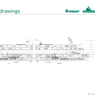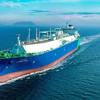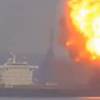U.S. & Norway: Difference Between Drilling Regimes
DNV has compared the U.S. Gulf of Mexico and the Norwegian offshore drilling regulatory regimes and regulations. The study identified several similarities, but overall there are some fundamental differences between the two countries’ regulations.
Immediately after the Deepwater Horizon accident, the Norwegian Oil Industry Association (OLF) asked DNV to research and prepare a report comparing the regulations in the US and Norway.
“The Deepwater Horizon accident was very serious. The Norwegian oil industry is not in a position to investigate the incident, but the OLF asked DNV to examine the regulations in the two countries so that interested parties could better understand the differences between the two regulatory regimes and, not least, consider any changes to the Norwegian regulations,” said Director General Gro Brækken in the Norwegian Oil Industry Association.
Different structure
The U.S. and Norwegian regulations are fundamentally different in structure. In the US, regulations are prescriptive – i.e. they specify the means and the minimum steps or actions required for compliance. In Norway, the regulations are mainly performance-based, which allows for different, and optimal, approaches to achieve safety targets. Additionally, Norway has included systematic risk management practices in its regulations.
In practice, prescriptive regulations set the lowest acceptable safety level and the regulatory agencies may feel the greatest sense of responsibility to confirm compliance. On the other hand, performance based regulations in Norway may allow for continuous development, adoption of new technology and global best practices, and this responsibility is placed on the owner or operator. This may encourage quality control in all operations.
Increased understanding
The report provides a thorough and technical review of the safety regimes. “The report will hopefully contribute to increased understanding and provide detailed insights into how US and Norwegian regulations compare. The importance of roles and responsibility, risk management and technology are some of the important elements,and they are approached differently in the US and Norway,” said Chief Operating Officer Elisabeth Tørstad in DNV.
“I hope the report will provide oil companies and authorities with a good basis for important policy discussions in the U.S., Norway and internationally when the industry and governments sum up what we can learn from the accident in the Gulf of Mexico and consider regulatory changes. In fact DNV has already observed that many investigations and major newspapers have expressed keen interest in the differences between the US and Norwegian regulatory regimes.”












